Fragments of Ancient English Shipwrighty
Title: Fragments of Ancient English Shipwrighty
Author: Matthew Baker and others
Year: c. 1580-1630
Country: England
Description: 154 pages
Owner: Magdalene College, Cambridge (Pepys Library)
Call No.: PL 2820
Notes: The name was given by Samuel Pepys (1633 – 1703), who preserved the work in his personal library.
Introduction
Fragments of Ancient English Shipwrighty is not a coherent manuscript, but rather a collection of pages. The beginning of the work is finely prepared, as if for publication, while others parts represent Baker’s working papers and rough notes. Despite its lack of coherence, it is a very important work because it is one of the oldest surviving works written by a practicing shipwright, and it provides the earliest evidence of a shipwright designing ships on paper using scale drawings.
The majority of the work was written by Matthew Baker, but other authors contributed, including possibly Anthony Linton, Baker’s predecessor, and John Wells, of the Deptford Dockyard.
The Author
Matthew Baker (1530-1613)’s father, James Baker, was a master shipwright for King Henry VIII. Matthew was raised in the trade, and is listed as a shipwright working alongside his father by 1544.
He achieved significant professional respect during his career, and in 1572 he was the first English shipwright to be appointed to the title of Her Majesty’s Master Shipwright, in 1572, by Queen Elizabeth I. He moved between the Deptford, Woolwich, and (after its creation in the late 1570s) Chatham yards, as the work required. His official duties included inspecting naval ships and directed their repairs, supervising the work of a large team of shipwrights and caulkers, marking which trees to cut for the construction of new ships, and improving the facilities at Chatham.
Baker pursued additional work beyond his official duties. His work in Fragments indicates that he also built ships for private customers. Additionally, naval records show that he was paid for providing supplies to the navy and providing lodging for shipwrights “prested” into royal service.
Baker worked during a period of rapid change in naval warfare and ship design. Henry VIII was the first English monarch to maintain a standing navy, and Elizabeth I invested heavily in naval power. By the 1540s ships were beginning to carry significant numbers of cannon capable of piercing the hulls of enemy ships, requiring major changes in ship design, including the introduction of tumblehome. The difficulty of adapting old designs to meet the requirements of new broadside fighting techniques is evidenced by the loss of the Mary Rose in 1545. Carvel ship construction replaced clinker-built ships around this time and ships began to frequently carry three or four masts instead of just two.
Baker was well trained in the mathematics of his time, regularly employing the extraction of square and cubic roots in his calculations. He believed there was an inherent perfection in mathematics and geometry, and used circular arcs wherever possible. He also created a new official tonnage rule in 1582, which remained in use until 1630.
In 1605, King James I named him First Master Shipwright in recognition of his long and distinguished career. He died in 1613.
Content
Baker uses the pages of his work to experiment with different designs for the ship’s midship frame, to make calculations, and to serve as a teaching aid for his apprentices.
Despite the novelty of design on paper, his work does not represent a complete break in design tradition. Like shipwrights working in wood alone, he centers the design process around the midship frame, writing “forasmuch as the goodness of every ship doth consist in the perfectness of the midship mould it is requisite [that] the same be perfectly made.” He draws many variations of midship frames, often making just small alterations to their shape.
Baker centers mathematics and geometry in his approach, taking it as self-evident that a ship designed using these “two supporting pillars of every art” (p 34) would be superior to one designed without them. He designs his midship frames using circular arcs and grids, varying the proportions of different elements to each other. When he finds a midship frame that results in a ship with good properties, he attempts to scale it up and down using linear and transverse scales in order to use it in ships of different sizes. He calculates tonnage using cube roots, but also provides an easier method for doing so.
Sections of Baker’s work are clearly written for his students, of which he had several.
Referenced In
Barker, R.A. (1986) ‘Fragments from the Pepysian Library’, Revista da Universidade de Coimbra, 32, 161-78
Blatcher, Margaret. (1989) “Chatham Dockyard and a Little-Known Shipwright, Matthew Baker (1530-1613). Archaeologia Cantiana. 107:155-172
Johnston, Stephen. (1994) “Mathew Baker and the Art of the Shipwright.” In: Making mathematical practice: gentlemen, practitioners and artisans in Elizabethan England’ Ph.D. Cambridge.
